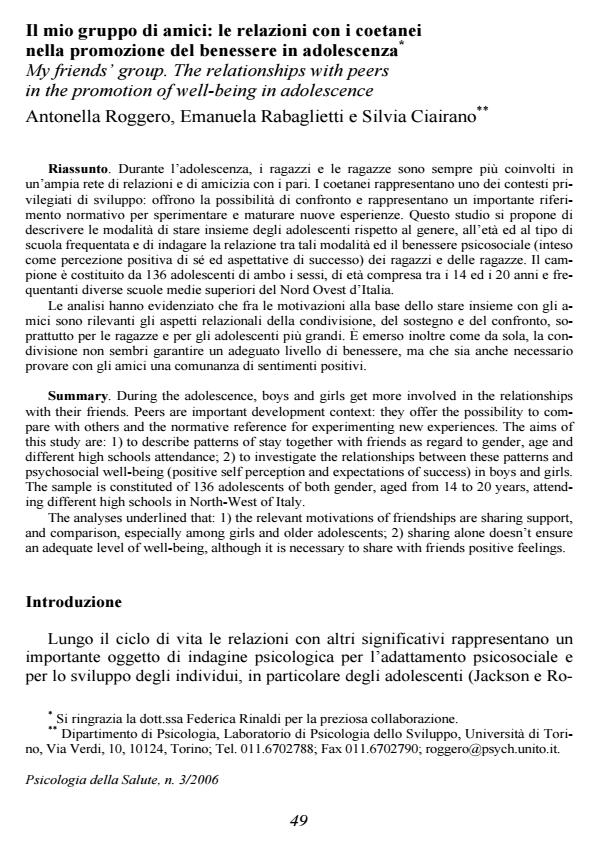Il mio gruppo di amici: le relazioni con i coetanei nella promozione del benessere in adolescenza
Titolo Rivista PSICOLOGIA DELLA SALUTE
Autori/Curatori Antonella Roggero, Emanuela Rabaglietti, Silvia Ciairano
Anno di pubblicazione 2007 Fascicolo 2006/3
Lingua Italiano Numero pagine 18 P. 49-66 Dimensione file 240 KB
DOI
Il DOI è il codice a barre della proprietà intellettuale: per saperne di più
clicca qui
Qui sotto puoi vedere in anteprima la prima pagina di questo articolo.
Se questo articolo ti interessa, lo puoi acquistare (e scaricare in formato pdf) seguendo le facili indicazioni per acquistare il download credit. Acquista Download Credits per scaricare questo Articolo in formato PDF

FrancoAngeli è membro della Publishers International Linking Association, Inc (PILA)associazione indipendente e non profit per facilitare (attraverso i servizi tecnologici implementati da CrossRef.org) l’accesso degli studiosi ai contenuti digitali nelle pubblicazioni professionali e scientifiche
During the adolescence, boys and girls get more involved in the relationships with their friends. Peers are important development context: they offer the possibility to compare with others and the normative reference for experimenting new experiences. The aims of this study are: 1) to describe patterns of stay together with friends as regard to gender, age and different high schools attendance; 2) to investigate the relationships between these patterns and psychosocial well-being (positive self perception and expectations of success) in boys and girls. The sample is constituted of 136 adolescents of both gender, aged from 14 to 20 years, attending different high schools in North-West of Italy. The analyses underlined that: 1) the relevant motivations of friendships are sharing support, and comparison, especially among girls and older adolescents; 2) sharing alone doesn’t ensure an adequate level of well-being, although it is necessary to share with friends positive feelings.
Antonella Roggero, Emanuela Rabaglietti, Silvia Ciairano, Il mio gruppo di amici: le relazioni con i coetanei nella promozione del benessere in adolescenza in "PSICOLOGIA DELLA SALUTE" 3/2006, pp 49-66, DOI: